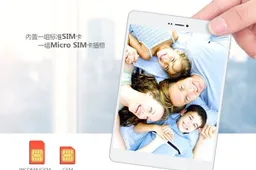
Many hot new Chinese phones are launching as TD-SCDMA models here in China, but what does that mean for you? What is TD-SCDMA, should you buy a TD-SCDMA phone, will it work on your network? Everything you need to know here!
What is TD-SCDMA
TD-SCDMA is the 3G standard developed for and used by China Mobile on the Chinese mainland. When 3G was just beginning in China, China Mobile decided to develop their own format of 3G so to avoid paying highly expensive patent fees.
TD-SCDMA launched in China on 7th July, 2009. TD-SCDMA phones come with a dual-band mode, the main band running 3G and the backup (legacy) band being GSM.
What does TD-SCDMA stand-for?
TD-SCDMA stands for 'time division synchronous code division multiple access'
Will TD-SCDMA work in my country?
The simple answer is ‘No’. If you want to use 3G a 3G data connection and you do not live in China, then TD-SCDMA will not work. However, if you do not require 3G and only rely on 2G/GSM networks and Wi-Fi then a TD-SCDMA phone should happily work on most GSM frequencies meaning you can make calls, send SMS and browse the web at EDGE speed (slow download and surfing).
Should I buy a TD-SCDMA phone?
China Mobile are the largest phone network in the world based on the number of subscribers. However, this means that even here in China their 3G network is under a lot of stress and is not as reliable than China Unicom’s WCDMA option.
The only time we would recommend buying a China Mobile TD-SCDMA phone is if you really want to have the latest handsets as they launch, as many manufacturers will launch their new device on China Mobile first.
For all other users who need 3G to work in China or Internationally, we suggest you to buy a WCDMA model which may also be known as a China Unicom version.
Do you have any questions about TD-SCDMA?
If you have any questions comments or tips regarding TD-SCMDA phones then please feel free to leave the m in the comments section below.
Loading






